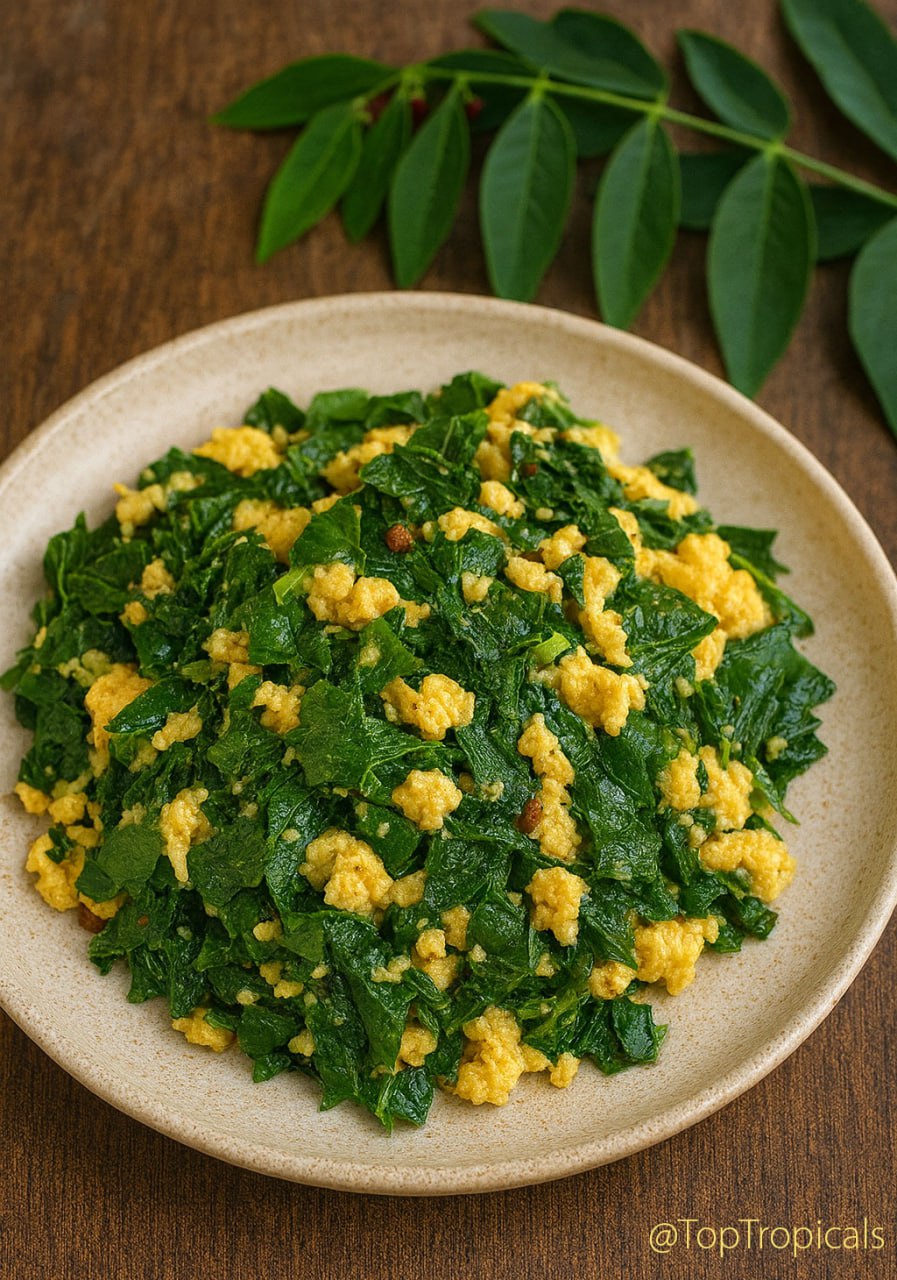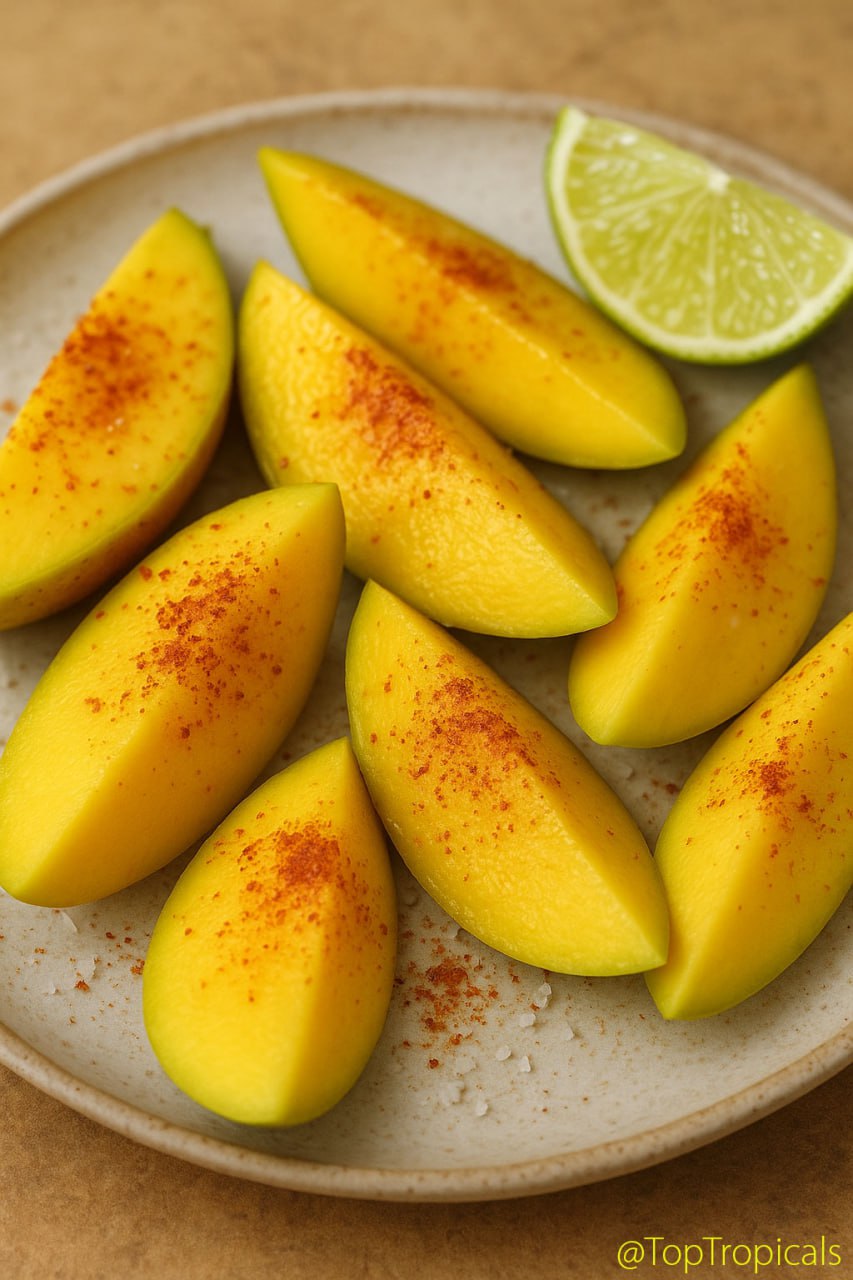Garden Blog - Top Tropicals
Before eating ice cream, try this fruit from a house plant
Swiss Cheese Plant - Monstera deliciosa
- 🍨 Most people know Swiss Cheese Plant - Monstera deliciosa - for its big holey leaves, but here’s the wild part: this jungle climber also makes fruit. Real fruit. And it tastes like pineapple mixed with ice cream.
- 🍨 Have you tried Monstera fruit? Will you eat it again?
- 🍨 This plant grows in the rainforests of Mexico and Guatemala, where young seedlings crawl toward the shade until they find a tree to climb. Yes, they grow in the direction of the darkest area, not just merely away from light. Interesting, ah?
- 🍨 In time, it sends out a green, cone-like fruit nearly a foot long. It takes a while to ripen - about a year - and only when the scales start to lift can you peel them back and find the creamy pulp inside. Ice-cream sweet and tropical.
- 🍨 One catch though: never eat the fruit unripe. The pulp contains oxalic acid that is generally harmless but will burn your mouth. Best trick is to let it wrinkle a little, wrap it up, and wait until the scales loosen on their own. Then it's ready.
- 🍨 And for collectors? The Thai Constellation, with its cream-splashed leaves, is the crown jewel. Some specimens sell for thousands. Not bad for a "Swiss Cheese Plant"!
🛒 Shop Monstera plants
📚 Learn more:
How to harvest and eat Monstera Ice Cream
#Food_Forest #Container_Garden #Shade_Garden
🟢 Join 👉 TopTropicals
Katuk egg stir-fry: Quick-n-Fun exotic recipes
🟢Saute chopped Katuk leaves (Sauropus androgynus) with garlic and a touch of soy sauce- 🟢Shen scramble in eggs.
- 🟢Fast, simple, healthy, and full of flavor!
🛒 Add healthy Katuk to your perennial vegetable garden
#Food_Forest #Recipes
🟢 Join 👉 TopTropicals
The only animal that laughs
"Man is the only animal that laughs and weeps; for he is the only animal that is struck with the difference between what things are, and what they ought to be." - William Hazlitt
🐈📸 Cat Bob is laughing at us at TopTropicals PeopleCats.Garden
#PeopleCats #Quotes
🟢 Join 👉 TopTropicals
When plants cross into the Gothic: the Darker Bat Lily
Black Bat Lily (Tacca chantrieri)
- 🖤 Here’s a striking look at the Black Bat Lily (Tacca chantrieri) - its dramatic dark bracts resembling bat wings, trailing whiskers, and tropical elegance all in one. If you met its cousin, the White Bat Head Lily (Tacca nivea) in earlier video, you'll notice the family resemblance - same dramatic whiskers and wing-like bracts, but this one leans fully into the dark side.
- 🖤 The Black Bat Flower isn’t just a bloom - it's a full performance. Giant black-maroon"wings" stretch out like a bat in flight, while long, drooping filaments dangle like eerie whiskers or jungle jewelry - some over a foot long!
- 🖤 Those weird, wild whiskers aren't just for show either. They're thought to mimic the look (and no, not the smell!) of decaying matter, luring in pollinators like flies. Creepy? Yes. Clever? Absolutely.
- 🖤 The Black Bat Flower blooms best when it feels pampered: filtered light, steady warmth, and spa-level humidity. It’s a smart exotic for a greenhouse or even a bright bathroom with a skylight.
- 🖤 It grows from a rhizome, and while Tacca chantrieri is prized for its gothic looks, its green cousin Tacca leontopetaloides is actually used in the tropics to make arrowroot starch.
- 🖤 Patience is part of the package - sometimes it takes months to bloom. But when it does, it becomes the crown jewel of the collection. People will ask if it's real. You'll just smile and say, "Yes - and it lives here."
🛒 Add this gothic gem to your collection - Black Tacca
Tacca colors: Black, White, Green:
Tacca nivea - White Tacca
Tacca chantrieri - Black Tacca
Tacca leontopetaloides - Green Tacca
📚 Learn more:
- ▫️The mystery of the White Bat Lily - the plant with wings and whiskers
- ▫️ A flying bat with whiskers
- ▫️ The rarest Green Tacca - Tacca leontopetaloides
- ▫️ When Bat Head Devil Flower is in bloom
- ▫️ Bat Head - Devil Flower
#Nature_Wonders #Shade_Garden #Container_Garden
🟢 Join 👉 TopTropicals
Advantage of a rainy day
Cat Philemon in a swing
"The way I see it, if you want the rainbow, you gotta put up with the rain." - Dolly Parton
🐈📸 Cat Philemon is hanging out is his own swing at TopTropicals PeopleCats.Garden
#PeopleCats #Quotes
🟢 Join 👉 TopTropicals
Helicopter flower Madhavi - the Spring Herald that clings to a Mango Tree

Hiptage benghalensis - Helicopter Flower, Madhavi, Spring Herald, flower close up

Hiptage benghalensis - Helicopter Flower, Madhavi, Spring Herald, flower

Hiptage benghalensis - Helicopter Flower, Madhavi, Spring Herald, seeds
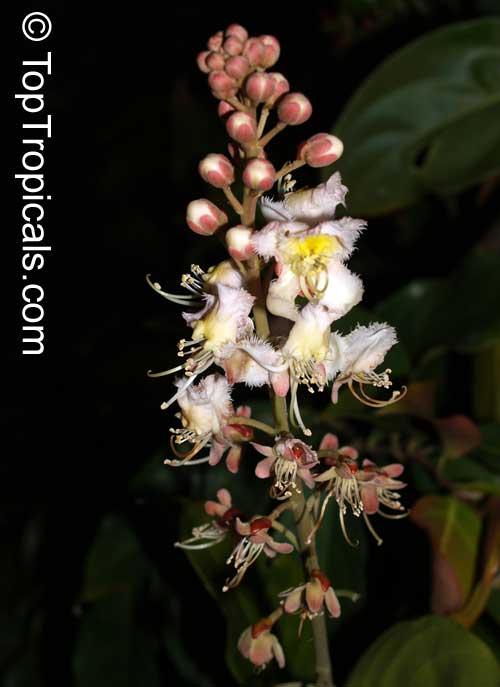
Hiptage benghalensis - Helicopter Flower, Madhavi, Spring Herald, flowers on the bush
- 🍥 Hiptage benghalensis
🛒 Bring Perfume Spring Herald to your garden
#Perfume_Plants #Hedges_with_benefits
🟢 Join 👉 TopTropicals
Mango chili salt bites: Quick-n-Fun exotic recipes
- 🟡Slice ripe mango into wedges.
- 🟡Sprinkle lightly with chili powder, salt, and a squeeze of lime.
- 🟡Sweet, spicy, salty, tangy - all in one bite!
🛒 Explore Mango varieties
#Food_Forest #Recipes #Mango
🟢 Join 👉 TopTropicals
Giving all to the present
Cat Timo sits where he fits at TopTropicals
"Real generosity to the future lies in giving all to the present." - Albert Camus
🐈📸 Cat Timo sits where he fits at TopTropicals PeopleCats.Garden
#PeopleCats #Quotes
🟢 Join 👉 TopTropicals
Date:
💖 Featured Variety: Lolita Surinam Cherry
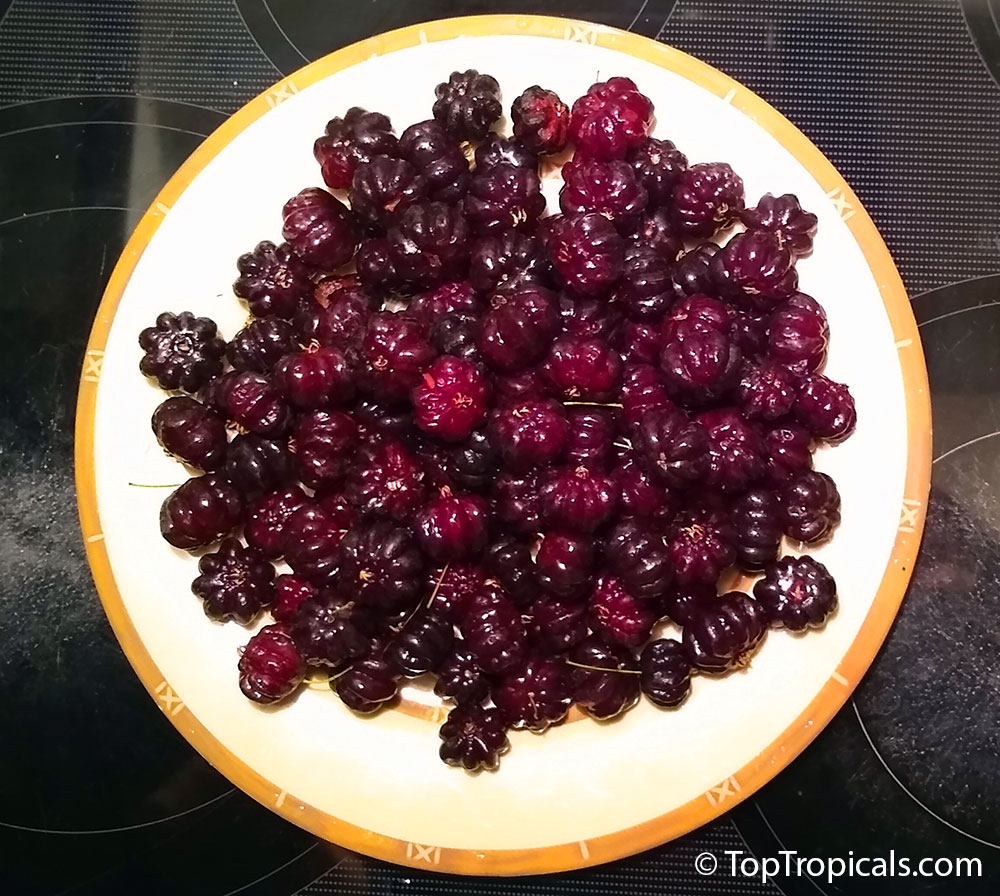
The Lolita is a special form of Surinam cherry. Fruits ripen nearly black, turning sweet and rich without the resinous bite of the common red type. The taste is often compared to a mix of grape and cherry with a tropical twist.
- Fruit Season: Mainly spring into early summer, often with a smaller second crop in fall
- Plant Size: Usually 6–8 ft in the ground, 4–5 ft in containers
- Container Friendly: Thrives in larger pots, stays compact with pruning
- Pollination: Self-fruiting — no partner tree needed
Health Benefits
- High vitamin C content for immunity and skin health
- Antioxidants that help reduce inflammation
- Fiber to support digestion
- A versatile kitchen fruit — eaten fresh, made into jams, sauces, or desserts
Date:
🍒 Tropical Cherries – Eugenias
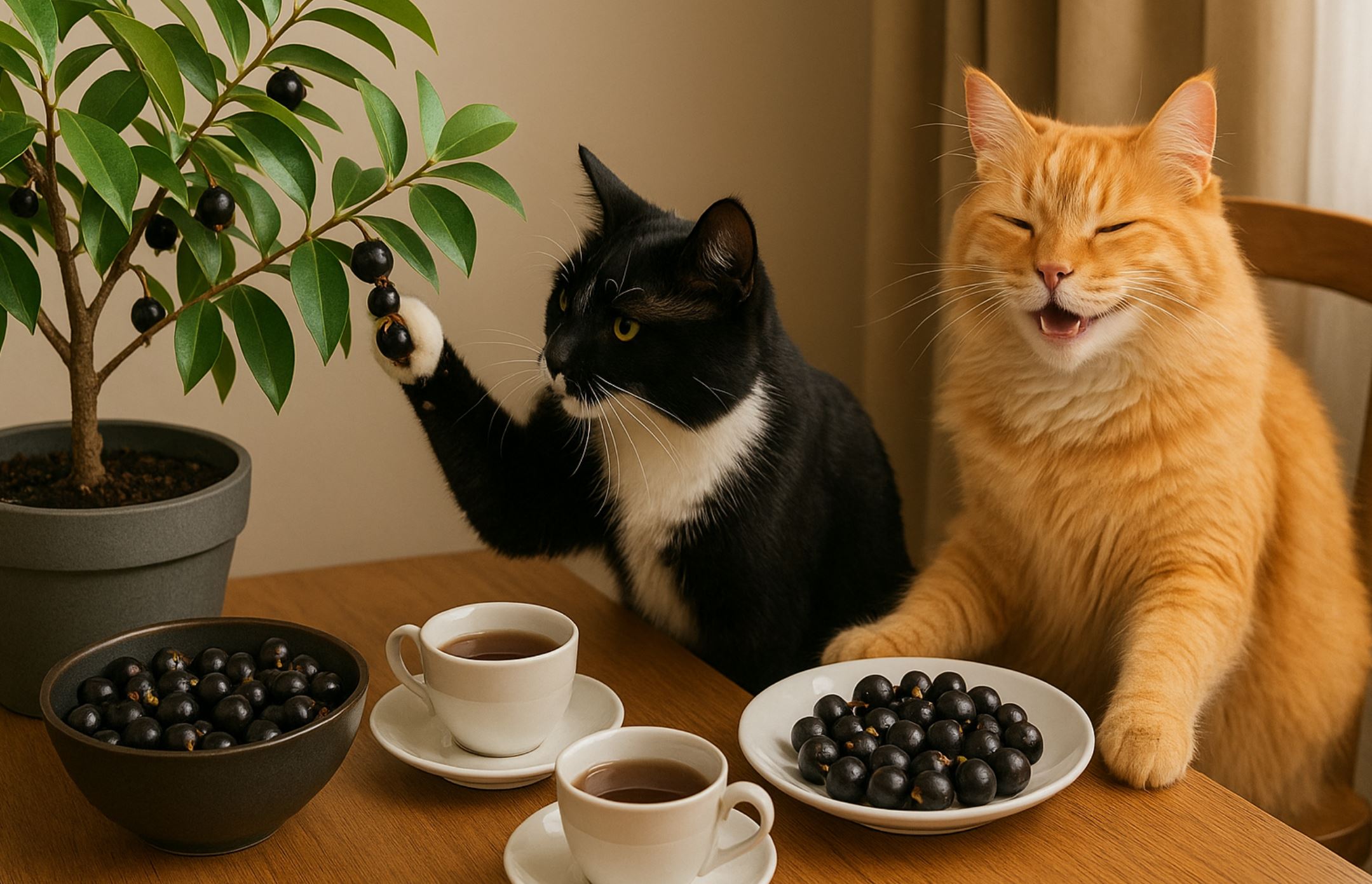
Tropical Tea Time with Grumichama
Eugenias have earned a spot in many Southern gardens because they’re easy, dependable, and surprisingly versatile. These small trees and shrubs grow well in the ground or in containers, and they don’t waste time before setting fruit.
15% Off Eugenias – Limited Time
Use code EUGENIA15 at checkout.
Excluding S/H. Offer expires 08/28/2025
👍 Popular Choices:
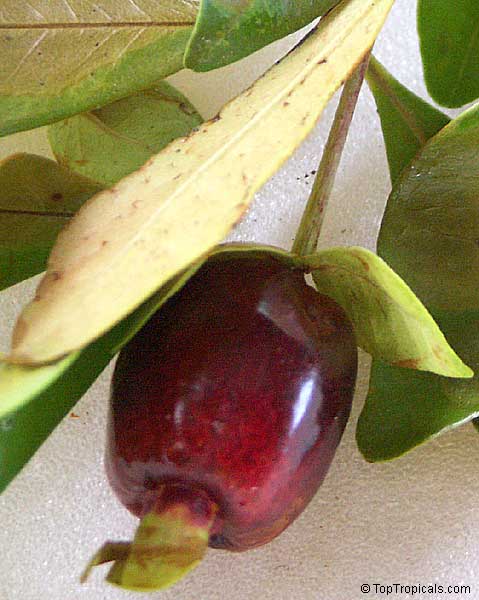 |
| 4148 Eugenia aggregata Fruit plant, Cherry of the Rio Grande |
Grown in 6"/1 gal pot
$49.95 Sale $39.95  |
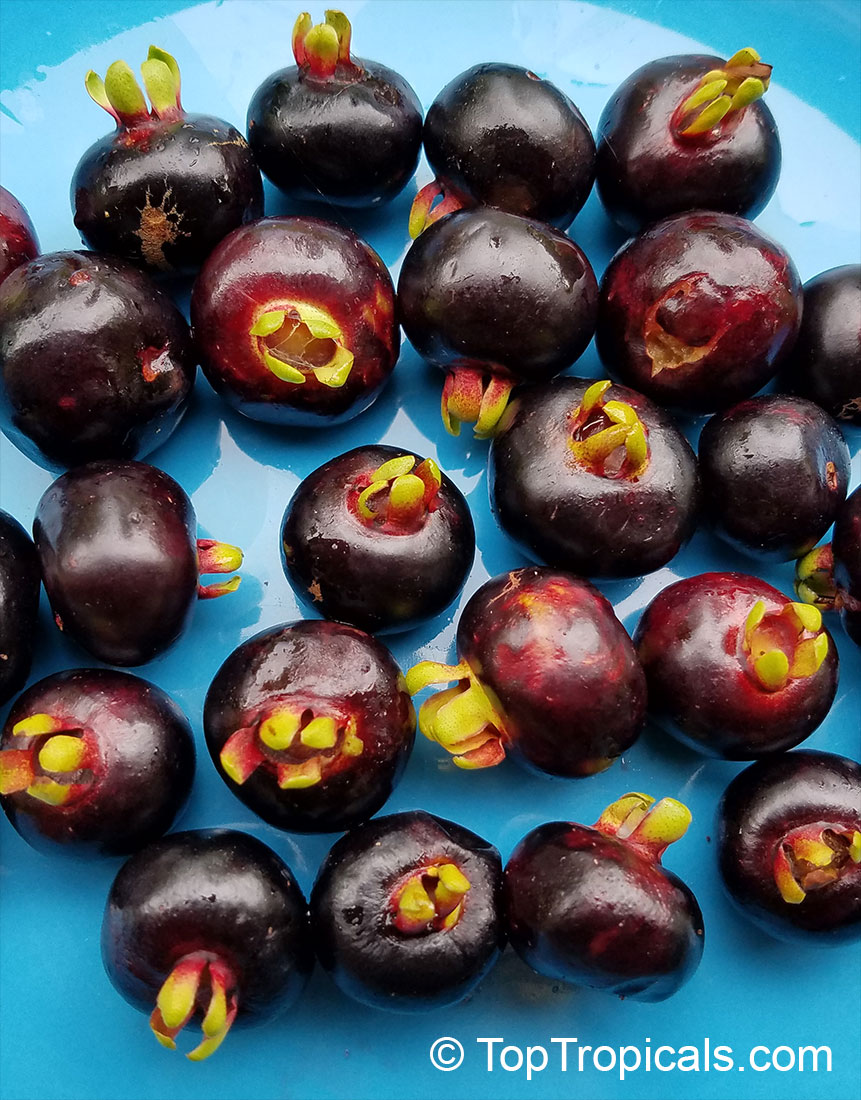 |
| 1079 Eugenia brasiliensis fruit tree - Grumichama |
Grown in
6"/1 gal or larger pot $39.95  |
 |
| 1080 Eugenia luschnathiana Fruit plant, Pitomba |
Grown in 10"/3 gal pot $49.95  |
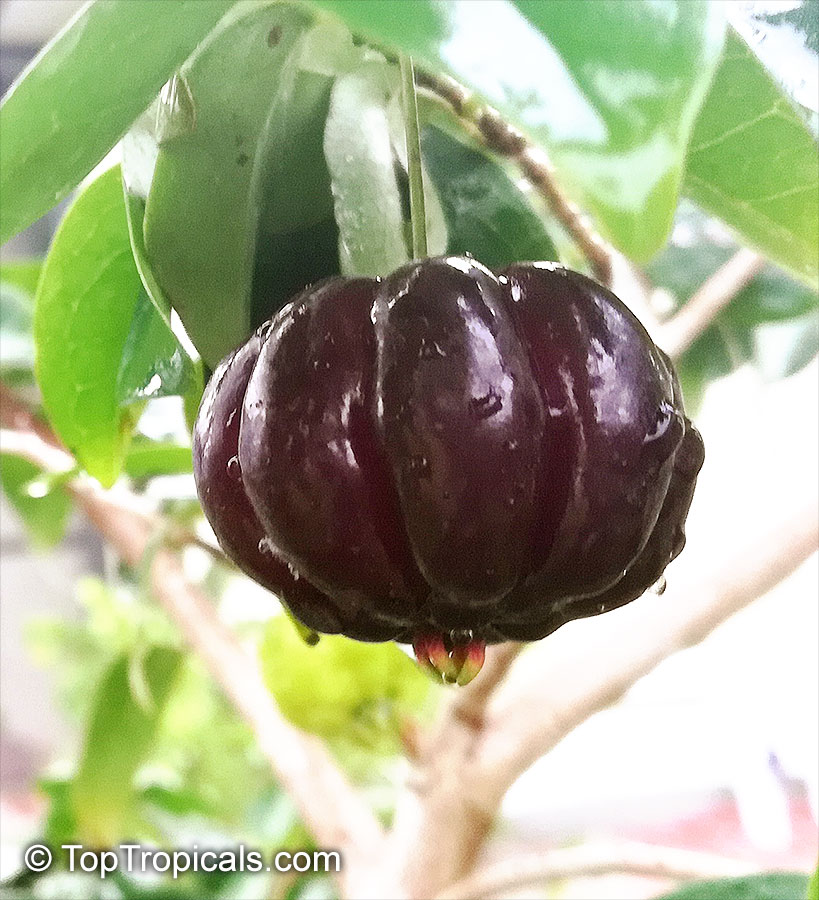
|
| 6063 Eugenia uniflora Fruit plant, Black Surinam Cherry Lolita |
Grown in 10"/3 gal pot $39.95  |
What Makes Eugenia Cherries Stand Out
- Start producing fruit in just a couple of years
- Compact size — easy to keep 6–12 ft tall, smaller in pots
- Low-care — tolerant of most soils and resistant to common pests
- Strong in hot weather, yet can handle a light frost down to the mid-20s °F
- Plenty of fruit for people and birds alike
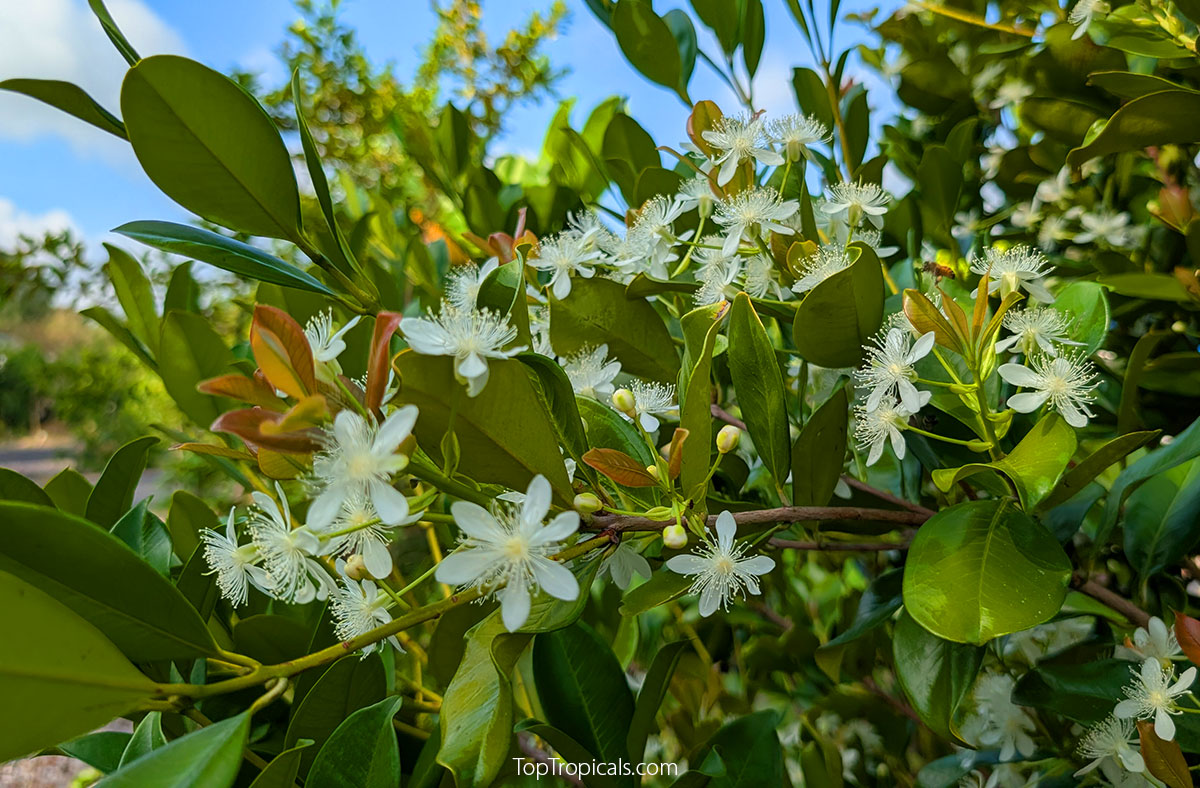 Grumichama Tree in Bloom – Eugenia brasiliensis
Grumichama Tree in Bloom – Eugenia brasiliensis
 Growing & Care
Growing & Care
Outdoors
- Best in USDA Zones 9–11
- Sun or partial shade; more sun usually means sweeter fruit
- Plant in well-drained soil; avoid heavy, wet spots
- Withstands summer heat and humidity, and can take a light freeze
Container / Indoor
- Do well in 5–10 gallon pots on patios or balconies
- Need bright light indoors — a sunny window or grow lights
- Can flower and fruit in containers if kept warm and well lit
- In cooler zones, bring plants indoors for winter and back out in spring
General Care
- Water: Keep soil evenly moist; drought-tolerant once established but best yields with regular watering
- Soil: Use good potting mix - LINK TO SOIL
- Fertilizer: Balanced slow-release LINKL TO FERTILIZER Sunshine Boosters
- Pruning: Light trimming keeps plants bushy and productive
- Pollination: Self-fertile; one plant will fruit on its own
